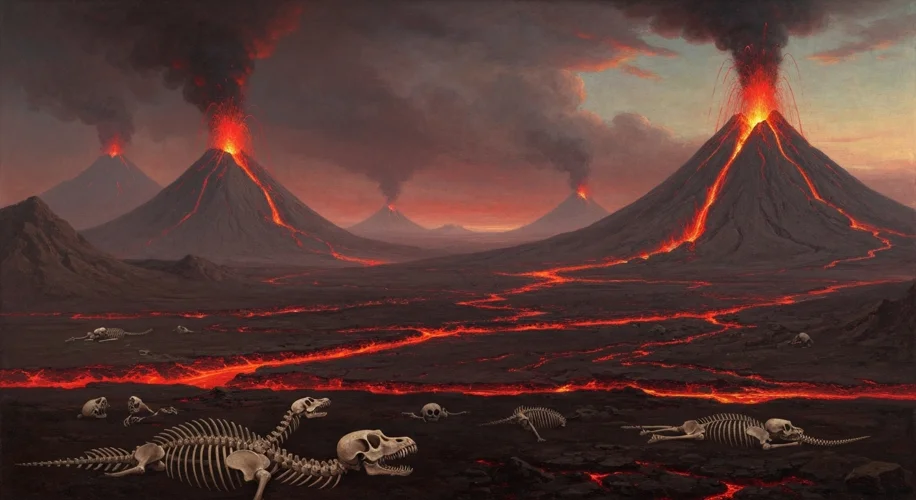It’s hard to imagine a world so different from our own, but Earth’s history is full of dramatic events that reshaped life as we know it. One of the most devastating was the Permian-Triassic extinction event, often called ‘The Great Dying’. This happened about 252 million years ago, and it was truly catastrophic – it wiped out around 96% of all marine species and 70% of terrestrial vertebrate species. But the consequences didn’t stop there. New research suggests that this single event triggered a staggering, 5-million-year-long heatwave that fundamentally altered our planet’s climate.
So, what could cause such a prolonged and extreme climate shift?
The Siberian Traps: A Volcanic Onslaught
The primary culprit appears to be massive volcanic activity in an area known as the Siberian Traps. Imagine this: for hundreds of thousands of years, immense volumes of lava erupted, covering an area larger than Western Europe. These eruptions weren’t just fiery displays; they spewed enormous amounts of greenhouse gases, like carbon dioxide (CO2) and methane, into the atmosphere.
Did you know that these gases trap heat? When released in such vast quantities over an extended period, they acted like a giant blanket, steadily warming the planet. This wasn’t a quick spike; it was a gradual but relentless increase in global temperatures.
The Feedback Loop of Warming
As the Earth warmed, a dangerous feedback loop kicked in. Warmer oceans hold less dissolved oxygen, stressing marine life even further. On land, higher temperatures likely led to widespread droughts and ecosystem collapse. Critically, warmer temperatures also meant that permafrost began to thaw, releasing even more trapped methane – a greenhouse gas far more potent than CO2 in the short term.
This cycle of volcanic outgassing, atmospheric warming, and the release of more greenhouse gases from thawing landscapes likely sustained the extreme heat for millions of years. Think about it – even small changes in our climate today can have significant impacts. Imagine the effect of injecting massive amounts of greenhouse gases into the atmosphere over geological timescales.
Lessons from the Past
Studying events like The Great Dying offers crucial insights into our planet’s climate sensitivity. While the triggers were different – massive volcanism versus human industrial activity – the principle of greenhouse gas accumulation leading to global warming remains the same. The sheer duration of the post-extinction heatwave underscores how long it can take for Earth’s systems to recover from major climate disruptions.
It’s a stark reminder of the power of geological forces and the profound impact that atmospheric composition has on our planet’s temperature. Understanding these ancient climate shifts helps us better comprehend the potential long-term consequences of our own actions on the environment today. It’s why I’m so passionate about looking at the science behind our changing climate, and how past events can inform our future.

